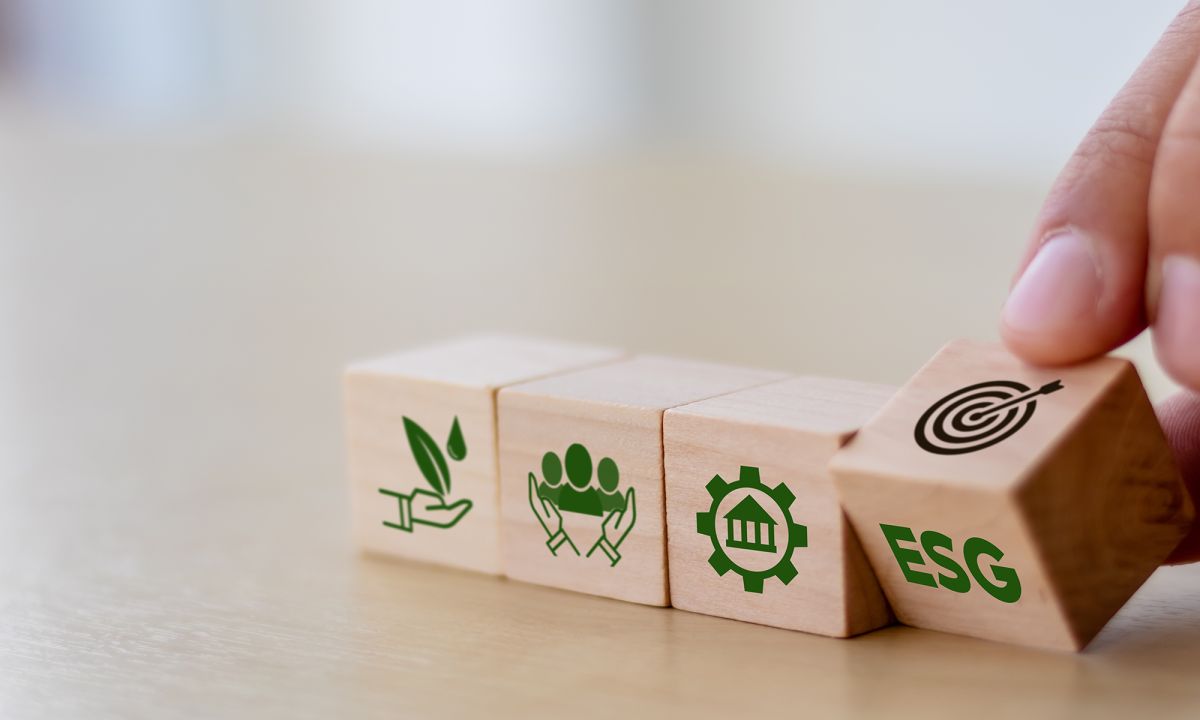Business Practices, eNews
The Role of ESG in Credit Risk

A company’s success is measured by its sustainability. With several environmental, economic and social challenges today, companies have to consider what steps to take now in order to prepare for the future—which is where ESG standards fit in.
What is ESG? ESG is the acronym for Environmental, social and governance, which are socially conscious standards used by investors to screen and rank investments. The goal of ESG is to bundle all non-financial related risks and opportunities presented to a company’s daily operations into one category. The term ESG was coined in 2004 with the publication of the United Nation’s global compact initiatives “Who Cares Wins” report.
The environmental aspect of ESG represents factors such as land-use concerns or whether a company uses recycled materials. Social aspects in ESG are based on how a company manages employee development and labor practices or reports on product liability and safety of a product. Lastly, governance could be based around shareholders rights or how compensation aligns with the company’s sustainability performance.
Why is it important? Several investors have started to incorporate ESG requirements into their investment decisions—which is why ESG has become more prevalent to secure capital. And the pressure on companies has slowly increased as ESG funds today are considered a multitrillion-dollar market.
You can look at ESG from a creditor default perspective in two ways. One is from a cashflow standpoint with a carbon tax lens, and the other is an investment standpoint from a risk of trapped assets or investment, said Martin Zorn, managing director of risk research and quantitative solutions at SAS Institute Inc. (Honolulu, HI). “ESG regimes have evolved globally with the concept of a carbon tax,” Zorn said. “It’s paying in the form of a carbon tax or what their production is. If you invest in a large project that includes the production of hydro carbons, ESG environment violations may result in investments not being able to get out of that project for future cashflows or refinancing.”
The impact of ESG also depends on what industry you are in. It is all about where you sell and who you sell to, said Jay Tenney, managing director at Trade Risk Group (Irving, TX). For example, the recent Bud Light controversy caused sales to deteriorate nearly 24%—with the social aspect of ESG and distributors being hit the hardest. “If that is your bread and butter and you’re losing 24% of your business, that has a direct impact on your cashflow,” said Tenney, “A lot of these companies jumped right into the deep-end on ESG and did not think what the real impacts are. The backlash against what the market perceived as an overreach on ESG has an impact.”
What should creditors know? A recent eNews poll revealed 93% of credit professionals do not ask customers if they have an ESG policy as part of due diligence. But as the world becomes more socially and environmentally conscious, more pressure will likely be added to assess ESG factors. “The United Nations-backed Principles for Responsible Investment (UN-PRI) also recognized that ESG factors can affect borrowers’ cash flows and the likelihood of defaulting on debt obligations,” reads an article from Deloitte. “Therefore, ESG factors have emerged as important elements in assessing the creditworthiness of borrowers.”
In the same way that the Sarbanes-Oxley Act (SOX) took some time to be widely accepted, or more recently the EU Supply Chain Act, ESG requirements have the potential to become more important in the future. “Furthermore, when ESG factors are incorporated as drivers into the credit ratings process, any downgrades may have an impact on lenders’ capital requirements, thus increasing financial risks,” according to Fitch Ratings. “Failure to address ESG issues could lead to poor reputation, misconduct risks, pricing errors and business development challenges, inter alia.”
Fitch Ratings’ 2021 ESG in Credit White Paper considers that of the three ESG factors, the lowest level of credit impact is currently attributed to environmental factors. “This is believed to be mainly driven by a low level of cost crystallization from environmental legislation and regulation to date,” per Fitch Ratings. “Over time, such regulation is likely to grow and we should see more environmental costs being factored into credit profiles.”
Because ESG is still a relatively new concept for many, the environmental aspect tends to be the most prevalent over social and governance—and this rings true especially when looking at credit. Any company that has high ESG standards is looked at as almost having a competitive advantage in the current business environment, said David Kinzel, vice president of Marsh, LLC (Denver, CO). “When making a credit decision, you can’t rely solely on a company’s ESG rating,” Kinzel said. “You still have to look at the financial statements and a traditional credit analysis because all criteria that is not captured in a financial statement can still impact future earnings of a company and should be incorporated into it.”





